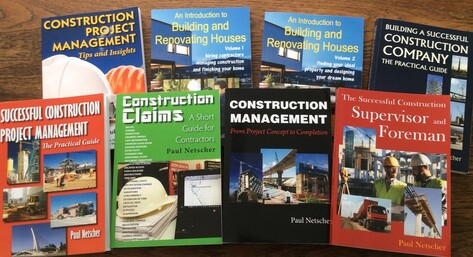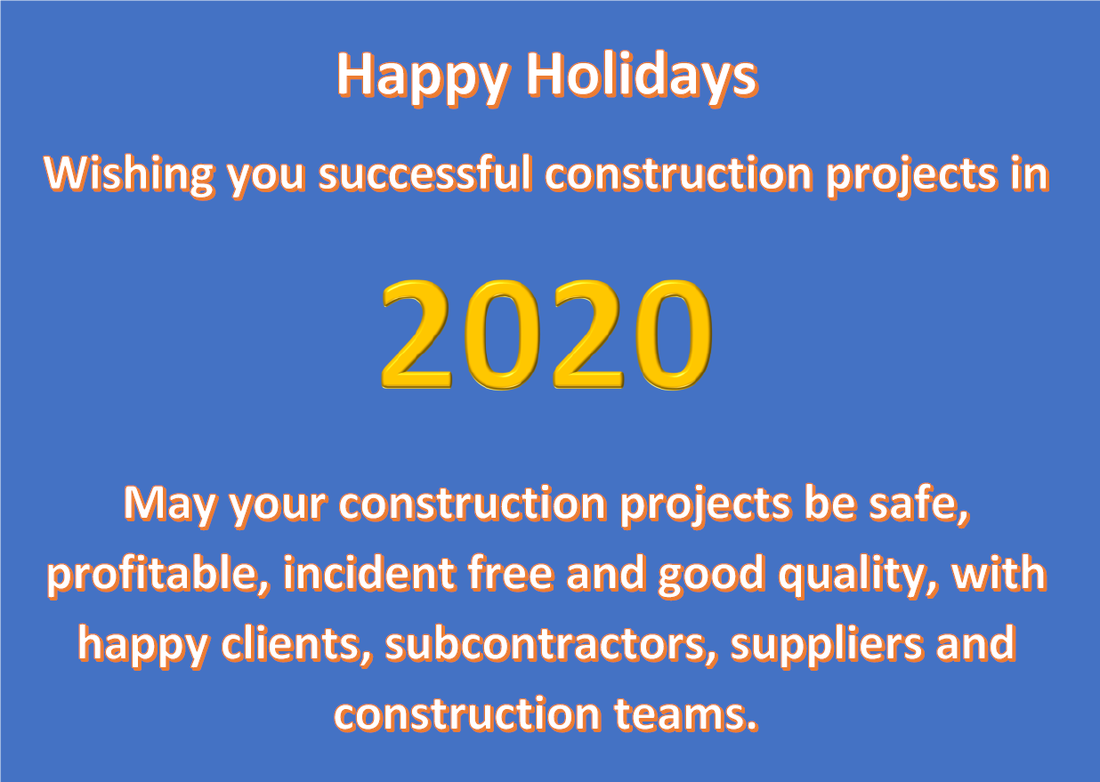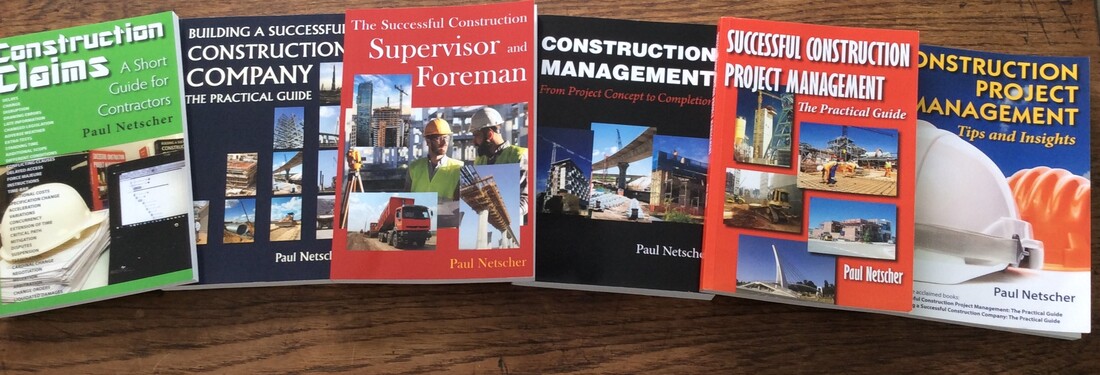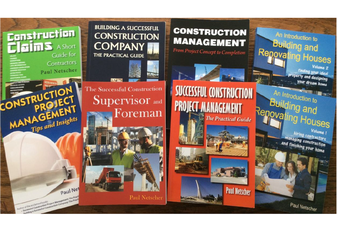Are you on holiday but you keep checking emails? Image courtesy of artur84 at FreeDigitalPhotos.net Image courtesy of artur84 at FreeDigitalPhotos.net Holidays are a time to relax and recuperate from work. Holidays are a time to enjoy with family. Yet many of us find it difficult to relax while away from work and often people return from holidays as stressed and tired as before the holidays. Families are left disappointed when fathers, partners and loved ones can’t relax and join in the family activities. Families are upset when a parent or partner is continually on their phone or checking emails. Families hate it when family engagements are interrupted by work, or their partner or father is always preoccupied with work. Are you guilty of always being preoccupied with work, or can you close the door at the office and take a holiday with minimal thought of work? Will you return from your holiday well rested? Will you spend quality time with your family this holiday without work interruptions? Leave work at the officeIn this digital age we can be permanently connected to the office 24 hours, 7 days a week, and 52 weeks in the year. But we all deserve a rest. So how can you disconnect from the office?
But a holiday isn’t always a holiday if it’s going to be stressful. It’s important to plan holidays where you can relax. That doesn’t have to mean a beach holiday (which can be stressful for some), rather a holiday where you can escape the big crowds, a holiday doing what you like doing, a holiday where you’re don’t have to think, plan and organise every day. It’s important to delegateLearn to delegate. You don’t have to do everything yourself. Most of us think we’re indispensable to the company, but usually we aren’t. Surround yourself with trusted, responsible people. People who can take on some of your duties – especially the smaller stuff. Most employees want to be challenged, they want to learn new things, they want to take on more responsibility. Having trusted employees in place who can take on some of your responsibilities while you’re away will mean that you can safely go on holiday and know that everything is in safe hands. Enjoy your holidaysIt’s vital to have time off work, time to relax and time to spend with the family. None of us can work all the time. We all need a break from work. A good holiday will often clear your mind and you’ll return to work reinvigorated and ready to take on new challenges. You’re on holiday, so ensure you really are on holiday. Don’t waste your holiday with work. Please like and share this article. Need help managing your construction projects
Paul Netscher has written several easy to read books for owners, contractors, construction managers, construction supervisors and foremen. They cover all aspects of construction management and are filled with tips and insights. The books are available in paper and ebook from most online stores including Amazon. © 2019 This article is not to be reproduced for commercial purposes without written permission from the author.
0 Comments
Wishing all my readers happy holidays and time with their family. May the holidays be festive, and restful. Enjoy quality family time before the new year begins. Thank you to the readers of my books and blogs for your support. A special thanks to readers who have posted book reviews, those who have commented on my articles and readers who have contacted me directly. I have enjoyed helping the construction fraternity in 2019, and I look forward to sharing my knowledge with you in 2020. May 2020 be a successful year with quality construction projects which are profitable and safe. Of course success is not about relying on luck, but it requires planning and investment. Ensure that you pay suppliers and subcontractors on time. Thank your employees for good work. Invest in training your team. Plan to make your construction projects successful. Need help managing your construction projectsPaul Netscher has written several easy to read books for owners, contractors, construction managers, construction supervisors and foremen. They cover all aspects of construction management and are filled with tips and insights.
The books are available in paper and ebook from most online stores including Amazon. Every company has rules for when a person can take time off work and often these are based on the country and state regulations. Some companies have more generous policies, and in some instances, union agreements may influence the time that employees can have off work. How do I get time off work? Image courtesy of artur84 at FreeDigitalPhotos.net Image courtesy of artur84 at FreeDigitalPhotos.net The time off could be annual vacations, statutory holidays, long service leave, sick leave, maternity leave, compassionate leave, etc. The time off could be paid, or unpaid. If an employee is entitled to be paid then the company policy should set-out how much pay, or the maximum hours that will be paid for that day. Sometimes the person has to take their vacation at a specified time (some companies close for a Christmas break and employees may be obliged to take their paid vacation then). The amount of time off in the year is stipulated in employee contracts. When last did you read your contract of employment, let alone the rules applicable to your employees? If the person only started work part way through the year they might not be entitled to the full quota of leave for that year, but rather only an amount that’s reduced proportionally by the time they weren’t working for the company. (Sounds confusing already, and it’s partly the reason ClockShark PTO has been such a success.) Company disciplinary policiesEmployees who are absent without a valid acceptable reason are usually in breach of the company disciplinary policies. Employees who are absent are disruptive to project progress and often it upsets productivity, especially if a key worker is absent. Consider when a crane or excavator operator is absent, it could hamper the entire team who may not be able to work effectively without the crane or excavator. But, even when an ordinary worker is absent it could leave a hole in the team, possibly meaning that the skilled workers are hampered. It’s therefore essential that project managers, supervisors or foremen take disciplinary action against those who are absent with no acceptable and valid reason. Failure to do so can lead to absenteeism increasing on the project. But who is tracking how many days each employee has taken off in the year? Reasons for a time off work Image courtesy of sippakorn at FreeDigitalPhotos.net Image courtesy of sippakorn at FreeDigitalPhotos.net Although someone taking leave is disruptive to your work and team, you shouldn’t stop an employee from taking time off when they have a valid reason. Of course, it’s essential that the person completes a company leave/vacation form which should be submitted to the pay officer. This’s particularly important so that the amount of days that the person has taken leave is tracked. Sick leave For instance, an employee may be entitled to 10 days paid time off for illness in a calendar year. Any sick leave days in excess of this won’t be paid. However, if nobody has tracked how many paid sick days the employee has already taken in the year, then even though they’ve already had their quota of paid time off for the year they’re going to continue receiving pay while they’re sick. Sure, the worker is fortunate and scores extra money, but imagine the cost to the company if this is repeated by 10, 20 or more employees. This eats into the company’s profits and ultimately impacts everyone’s wages and bonuses. It’s maybe money that could even have been spent on purchasing new equipment. Remember to that the person may be transferred to another supervisor or project, so if there’s no record of the amount of time off that you granted them, then their next project manager, supervisor or foreman will assume that they’ve had no days off for the year. Lucky employee, they’ll be able to have a second lot of paid time off. Having a sick person at work means that they could infect others, it often means that they aren’t fully productive because of their illness, and sometimes it could even be dangerous to the person’s health and to the safety of others on the project. If you or someone in your crew is sick then go see a doctor. If the doctor books you off work stay at home. Of course, always ensure that people who have taken time off work because they were ill, were actually sick, and normally they should bring a medical certificate/note as proof. Annual vacation days and holidays Often we’re under pressure to complete projects. This causes projects to work long hours and it may even be necessary to work through vacations or on statutory holidays. It’s important, however, that everyone has an opportunity to take their annual vacation days and statutory holidays. It’s essential that you take your vacation. Everyone needs an opportunity to rest and spend time with their family. Families want time together. Don’t be the Grinch that stole the holidays! Plan your work so that you and your crew can have time off. Workers that have time off to rest and spend with their family are often more productive. Depending on company policy, annual vacation days that haven’t been taken may be accumulated, while other companies might stipulate that the leave not taken is forfeited. In the past, I’ve had employees accumulate large amounts of vacation days, sometimes in excess of 3 months. This is a liability (future cost) to the company, because at some time in the future the employee will take their allotted vacation days and be paid while they use this time off – has the company set aside money for this time, or will it be a cost that a future project must cover? In some companies, employees are allowed to choose to be paid the vacation days owing to them in lieu of them taking the days off. Although employees may prefer the money, this practice should be discouraged, because it defeats the object of annual vacations – which is to have time to rest, time with families, time to get away from work and recharge, and not a means to gain an extra paycheck. It should be noted that normally only annual vacation days are allowed to be accumulated. Usually sick, bereavement and compassionate leave are given and used on an annual basis. Just because a person has an entitlement to, say, 10 days paid time for illness in a year, doesn’t mean that the person can use the full 10 days even when they aren’t actually sick, nor does it mean that the unused sick days can be rolled over to the next year, or paid out to the employee. Family leave Some employees come to project managers, foremen, and supervisors with hard luck stories, maybe problems at home. Reasons why they need to go home, or why they were absent from work. Sometimes these are fabricated, so always ask for proof. It’s amazing how some workers always have problems with their transport, or there’s a different family member dying every month! From time to time people do suffer dramas at home and they do need time off work. Occasionally you should show a little compassion and understanding, but in all cases, the time off must be correctly recorded. But, often it’s the same people who seem to have dramas – will you have a record to check when last you granted the person time off and how frequently they’ve taken time off? Personal lives and problems shouldn’t interfere with work. They shouldn’t have to impact the project. Of course, where a person can’t sort out their lives and there are continued dramas you will have to take a tougher stance. Continued absenteeism shouldn’t be tolerated unless there’s really exceptional extenuating circumstance – but these should probably be discussed with your managers. Always ensure that you take time off to rest, time to spend with your family. Conclusion...Continue Reading.... This article was first published on the ClockShark website. To visit this website and continue reading the article click on the link above. Please share this post Do you want to learn how to manage construction projects successfully?Paul Netscher has written several easy to read books for owners, contractors, construction managers, construction supervisors and foremen. They cover all aspects of construction management and are filled with tips and insights. The books are available in paper and ebook from most online stores including Amazon. Need help with your construction project or construction company?Contact Paul Netscher for help and advice.
To read more about the author’s books and find out where you can purchase them visit the pages on this website by clicking the links below:
To read more about the author visit the page 'Paul Netscher' Want to contact Paul Netscher please enter your details on 'Contacts' Find out how Paul Netscher can help you © 2019 This article is not to be reproduced for commercial purposes without written permission from the author. $5.3 trillion construction pipeline of 8000 projects in 50 citiesGlobal Data tracks large-scale construction projects in all sectors, and following a recent assessment of project pipelines in major cities worldwide, it has compiled a listing of 50 “Construction Mega Cities” for 2019, each having a pipeline of projects with an investment value above US$30bn. The combined value of the project pipelines in these cities stands at US$5.3 trillion, and includes over 8,200 projects at various stages of development, from announced to execution. Read More. Do you want to learn how to manage construction projects successfully?I've written several easy to read books for owners, contractors, construction managers, construction supervisors and foremen. They cover all aspects of construction management and are filled with tips and insights.
The books are available in paper and ebook from most online stores including Amazon. Are you losing construction projects because your price is too expensive?When clients and project owners prepare project budgets for construction projects they often confuse real costs, estimates, and contingencies. This can result in construction budgets that are too low, meaning they run out of money before the project is completed. Alternatively, when construction budgets are too high the project appears to be too expensive and nonviable and it’s cancelled. Contractors also confuse real construction costs, estimates, and contingencies when they price construction projects. If their price is too low then they lose money when the construction costs exceed the price they agreed with the client. Alternatively, if their price for the construction project is higher than other contractors’ prices then they won’t win the project. How to calculate construction contingency costsLet’s look at a simple analogy. You decide that you are taking the family for dinner at a restaurant. How much will it cost and what restaurant can you afford? When you assume the costs based on known information If you’ve been to the restaurant before you might have an idea of what the average meal costs. So you calculate that there are four people and assume that each person chooses an item that costs $20, and they order drinks that cost $10. Now, this is a guess based on previous experience. You could add a contingency of 10% to these prices, so the $20 has a $2 contingency and the $10 has a $1 contingency. So your estimate is $132 – which is 4 people at $30 plus 10% contingency. When you have little information (you're guessing a price) Now if you hadn’t previously visited the restaurant, then you’re going to be less sure of your estimate of the cost of the meals. Maybe again you estimate $30 per person and you then add a contingency of 15%, so your estimate is $138. But some might add more contingency. Say, it’s your partner’s birthday, maybe they’re going to splash out and spend more, possibly even have a desert. So you add a 50% contingency for their meal. Your cost estimate will then be 3 x $30 plus 1 x $30 + 50%. This is $135. Then you add 15% contingency to this total estimate and your budget is $155.25. This might now be more than you’re willing to pay so you cancel your dinner plans – tough on the family. But see what we just did. You added 50% to one meal, then added 15% on top of the 50%. You’ve actually added 72% to one meal and the $30 is now $51.75 – is this realistic? You’ve added contingency on top of contingency! Yet, frequently that’s what contractors and clients do. When your estimate is too high you can reduce the contingency But, in the above example, we’ve only assumed the worst-case scenario that everyone’s bill is more expensive than the estimate. Is there a chance that one of your kids only orders a kids meal and a soda? Maybe there’s a possibility that your estimate for the children of $30 is too high. So why add a contingency to their meal? In this case, you could add 5% to 2 people’s meals and 10% to the other 2, or an average of 7.5%. Your budget is now $129. This might seem a small difference, but often contractor’s win projects with a price only a few percentage points lower than other contractors’ prices. When you know the exact cost Often you even know what some costs are, so it’s unnecessary to add a contingency to your known costs? Sticking with the restaurant analogy, maybe you know that the restaurant has a kid’s special including drinks and the price is $20. That’s what you will order for your 2 children. So, we have 2 meals at $20 known cost and 2 meals estimated to cost $30 each. So the total is $100. But there’s still some uncertainty so we add a contingency. It’s not necessary to add contingency to the 2 children’s meals only to the adults. Adding 15% contingency only to the adult’s meals is 15% on $60 which is $9 and your budget is $109. This is much less than your first price of $132 – in fact 17% less. Applying this to construction estimatesKnown construction prices Well, when we price a construction project there are certain known costs. So, we have a subcontractor price to install the complete roof. This is a known price, a fact, so there’s no reason to add a contingency on top of this price. Then we can calculate what some things will cost and this is based on the costs of materials, labour, and equipment, and our calculation is built on our previous knowledge and experience as well as known prices for construction materials and equipment which we’ve obtained from suppliers. If we’ve done similar work before and kept track of productions and construction costs then we’ll have high confidence in our cost estimate. If it’s something new then we will have low confidence in our price. Depending on our confidence we might add a contingency on top of our price. So low confidence means a higher contingency. But. it’s pointless adding a contingency to each of our estimates, then reaching a total price, then adding another contingency on top of that figure. Not only have we added contingency to known prices such as the roof, but we’ve also added contingency on top of contingency. So for instance, if we had a 10% contingency for concrete and then added another 10% contingency to our total price, then the contingency for concrete isn’t 10% + 10% = 20% but it’s actually 21%. 10% onto 10%. If we know we have 100 cubic yards of concrete on the project we calculate the estimated cost for the concrete. This includes the cost to purchase the concrete plus the cost to place the concrete. The cost of the concrete is usually a known price because we’ve asked the supplier for a price. The unknown price (separating the known from the unknown) The unknown is the wastage. If the concrete is going into a structure contained within forms the wastage may be minimal – a couple of percents (the shape and box have precise dimensions). If the concrete is in a slab on the ground the wastage could be as high as 10% – the ground may not be perfectly level and the dips could add an extra half inch to the thickness of the concrete slab, meaning we use more concrete. Often contractors add contingency to cover them for the worst case scenario. But, is it likely that every item will reach the worst case scenario? Some items might turn out exactly as estimated, some might be as bad as the worst-case estimate and some might only be half as bad. So, in the example of the concrete slab on the ground we assumed half an inch or 10% maximum wastage, but assuming the slab will never be thinner than required, we may in some cases have zero wastage and sometimes there’ll be a half inch of wastage - the wastage varying between 0 and a half. So on average, the wastage might only be a quarter inch or 5% and not 10%. A 10% overall wastage would mean that in some areas the slab will be an inch thicker than allowed while in other places it will be the exact correct thickness. Of course if you assumed that in some places the slab was equally as thin (obviously it’s not good practice to have a concrete slab thinner than it should be) as it was thick in other places, then overall the thinner areas may balance out the thicker concrete and it wouldn’t be necessary to add any additional wastage. Sometimes contractors are asked for a quick estimate or budget price. They could take a price for a similar building or structure and then add a contingency to this price – this is a very rough estimate. If they have more time they could calculate the size of the building, then knowing the square feet apply a rate per square foot. They’ve done a bit more research so their price is a little more accurate than the first estimate, so they don’t need to add as big contingency to their cost estimate. If the contractor has more details and spends time breaking the structure into more detailed components which the contractor prices, then the contractor’s price becomes more accurate, and the contingency the contractor adds to their price becomes less. If the contractor has prices from subcontractors for all the work, then there probably isn’t any reason to add any contingency, because all the price risk lies with the subcontractors. What we see from the above is that the more research and investigation we do, the more confidence we have in the price, until eventually we have 100% confidence and we don’t have to add any contingency to our price. Conclusion - Calculating the right price for your construction project Image courtesy of fantasista at FreeDigitalPhotos.net Image courtesy of fantasista at FreeDigitalPhotos.net If a contractor’s price for a project is too low they’ll lose money on the project. If the contractor’s price is too high they’ll never win the project. The contractor’s price is usually made up of known costs (facts) and these are exact prices provided by subcontractors and suppliers. There is no need to add a contingency to these items. Then there are some items which are estimates. This could be an estimated quantity, an estimate of wastage or an estimate of the rate of production. Depending on the confidence on how the figures were derived the contractor may add a contingency to the item. But each item usually has a different degree of certainty, so the contingency added would be different for different items. Contractors must always take care that they aren’t adding contingency on top of contingency. .....Continue Reading..... This article was first published on the ClockShark website. To visit this website and continue reading the article click on the link above. Please share this post Do you want to learn how to manage construction projects successfully?I've written several easy to read books for owners, contractors, construction managers, construction supervisors and foremen. They cover all aspects of construction management and are filled with tips and insights. The books are available in paper and ebook from most online stores including Amazon. Need help with your construction project or construction company?Contact me for help and advice.
To read more about the author’s books and find out where you can purchase them visit the pages on this website by clicking the links below:
To read more about the author visit the page 'Paul Netscher' Want to contact Paul Netscher please enter your details on 'Contacts' Find out how Paul Netscher can help you © 2019 This article is not to be reproduced for commercial purposes without written permission from the author. As an Amazon Associate I earn from qualifying purchases |
Archives
June 2024
Note: We welcome genuine comments, especially comments that add additional information to the subject matter in the article. We however reserve the right to remove inappropriate comments, which includes comments that have nothing to do with the subject, comments that include inappropriate language, and comments that are an advertisement for a product or company, or which include an advertising link. Comments must be in English. We will not enter into discussion on why a particular comment was removed.
CategoriesCopyright 2016 - The attached articles cannot be reproduced for commercial purposes without the consent of the author.
The opinions expressed in the attached articles are those of the writer. It should be noted that projects are varied and different laws and restrictions apply which depend on the location of the contractor and the project. It's important that the reader uses the supplied information taking cognisance of their particular circumstances. The writer assumes no responsibility or liability for any loss of any kind arising from the reader using the information or advice contained herein. "I have what I consider some of the best books on construction management."
Books are available from: Amazon.com Amazon.co.uk takealot.com kalahari.com Amazon.in Amazon.de Amazon.fr Amazon.it Amazon.com.au Powell's Fishpond uread bokus Amazon.ca Amazon.es Other retail stores Available in paperback or on Kindle "28 YEARS OF CONSTRUCTION PROJECT MANAGEMENT EXPERIENCE, DEVELOPING SUCCESSFUL CONSTRUCTION PROJECT MANAGERS AND BUILDING SUCCESSFUL CONSTRUCTION COMPANIES"
|













 RSS Feed
RSS Feed




